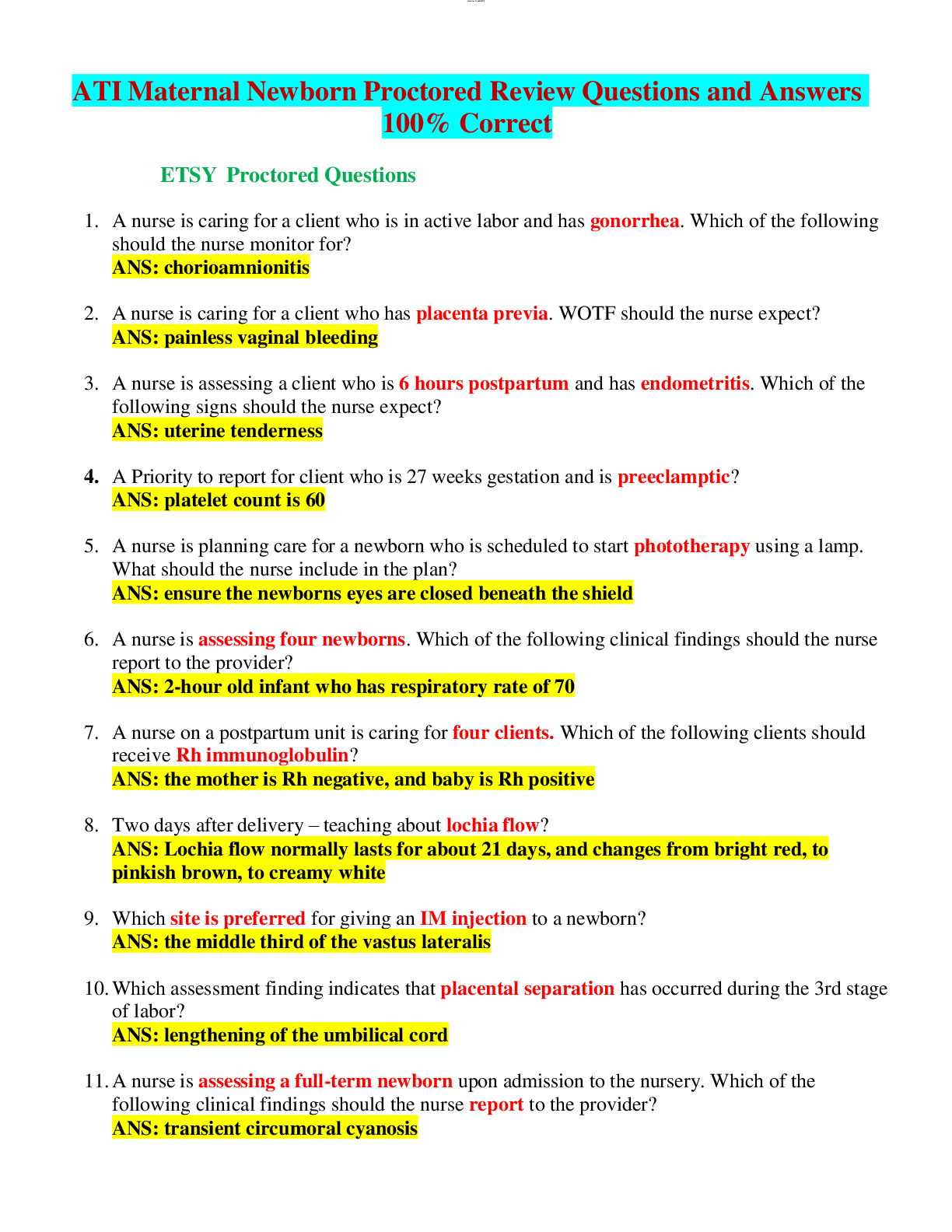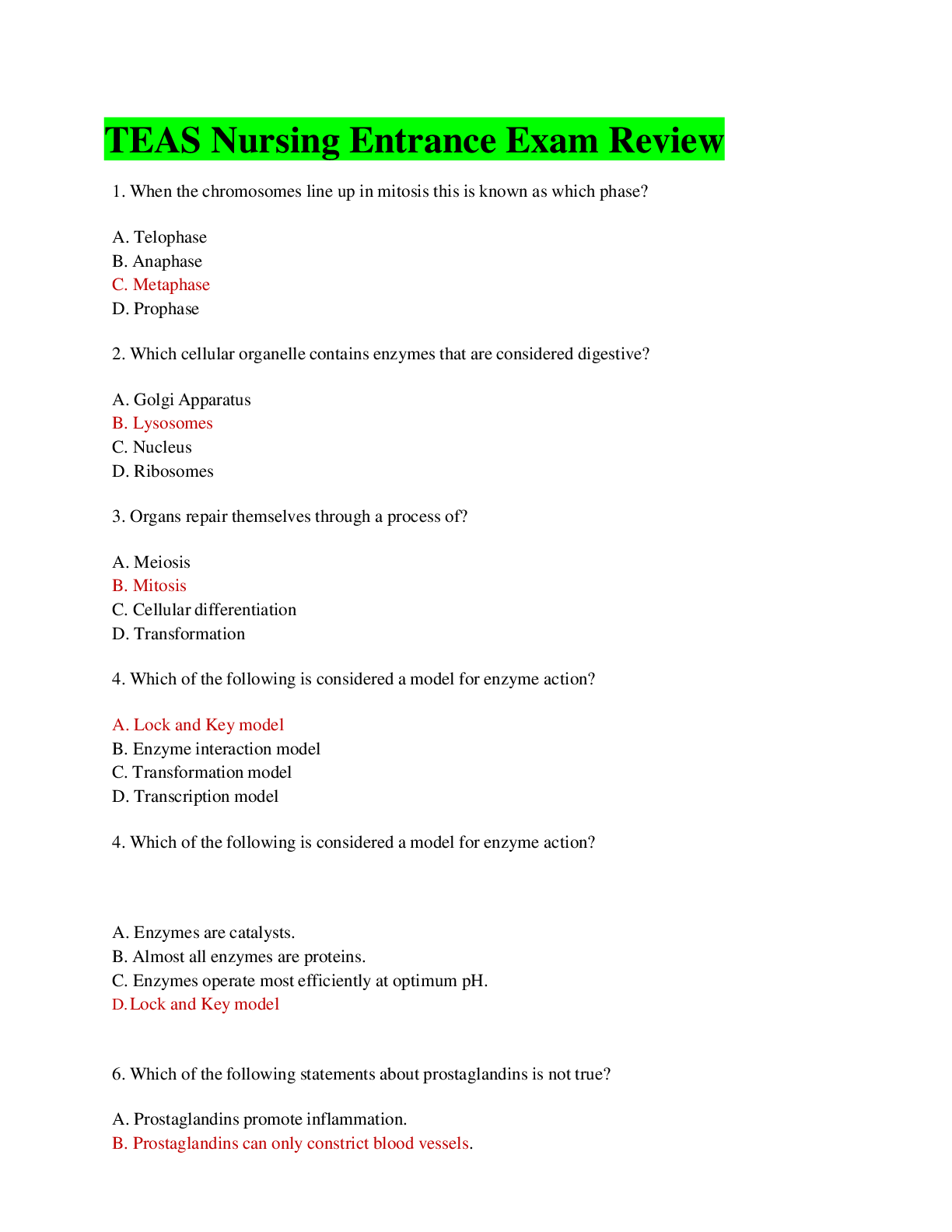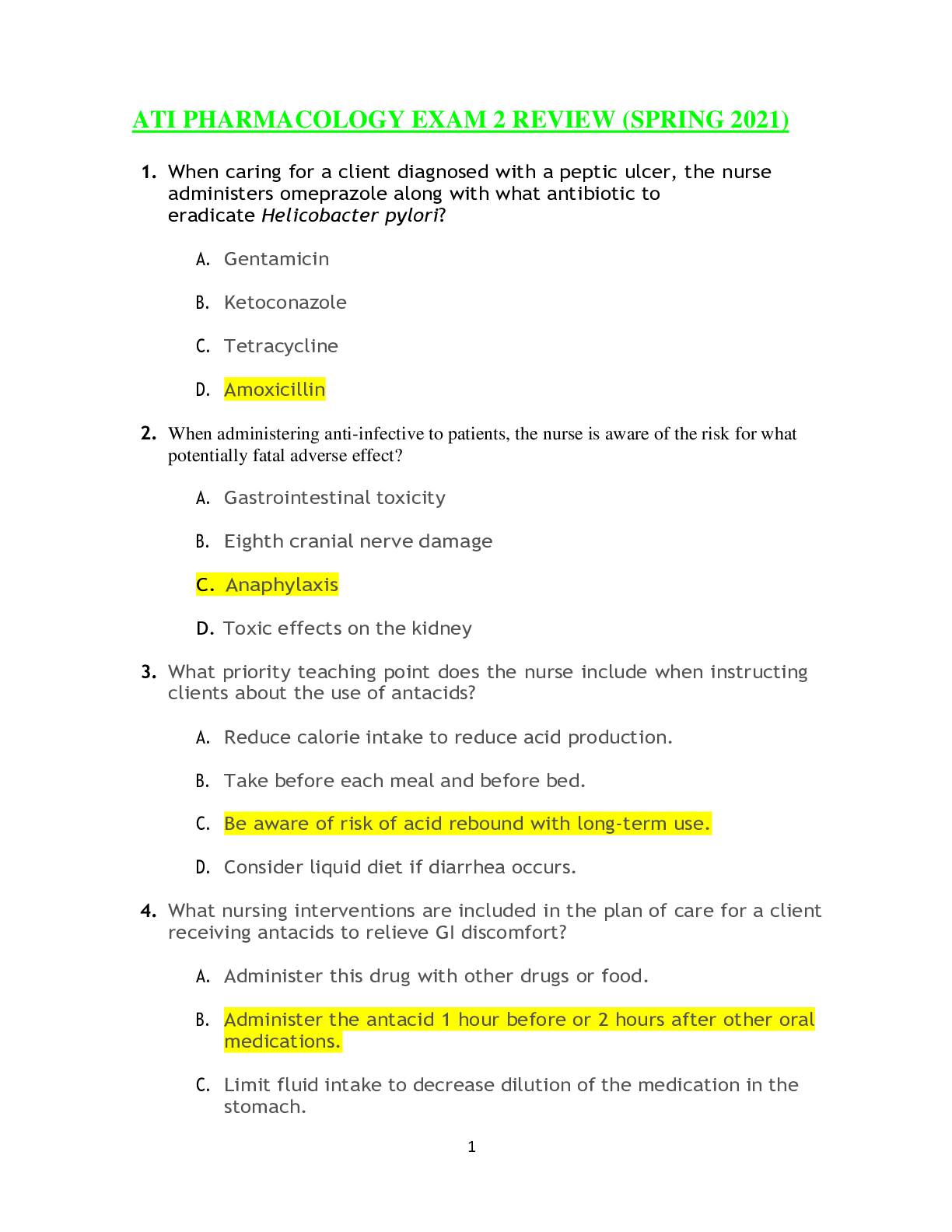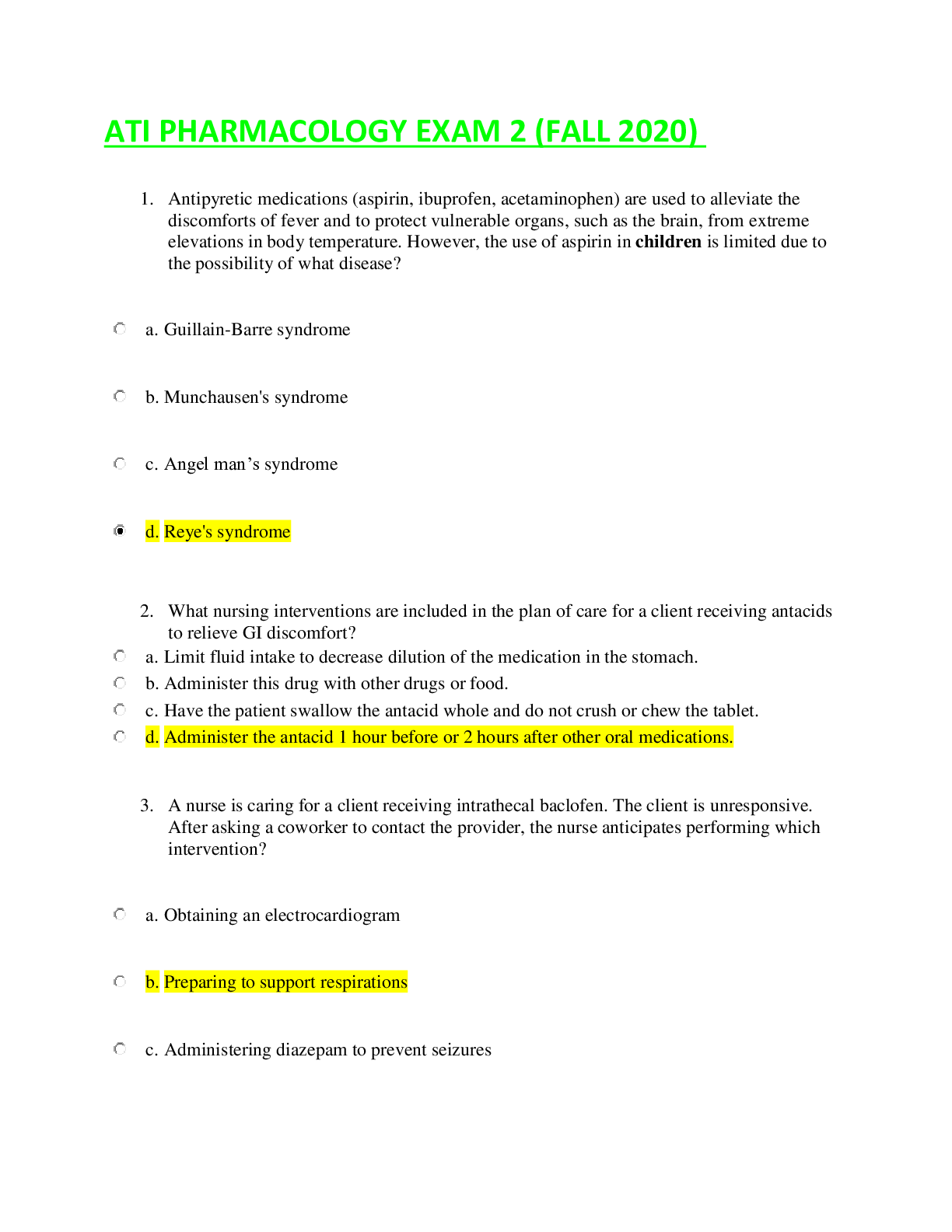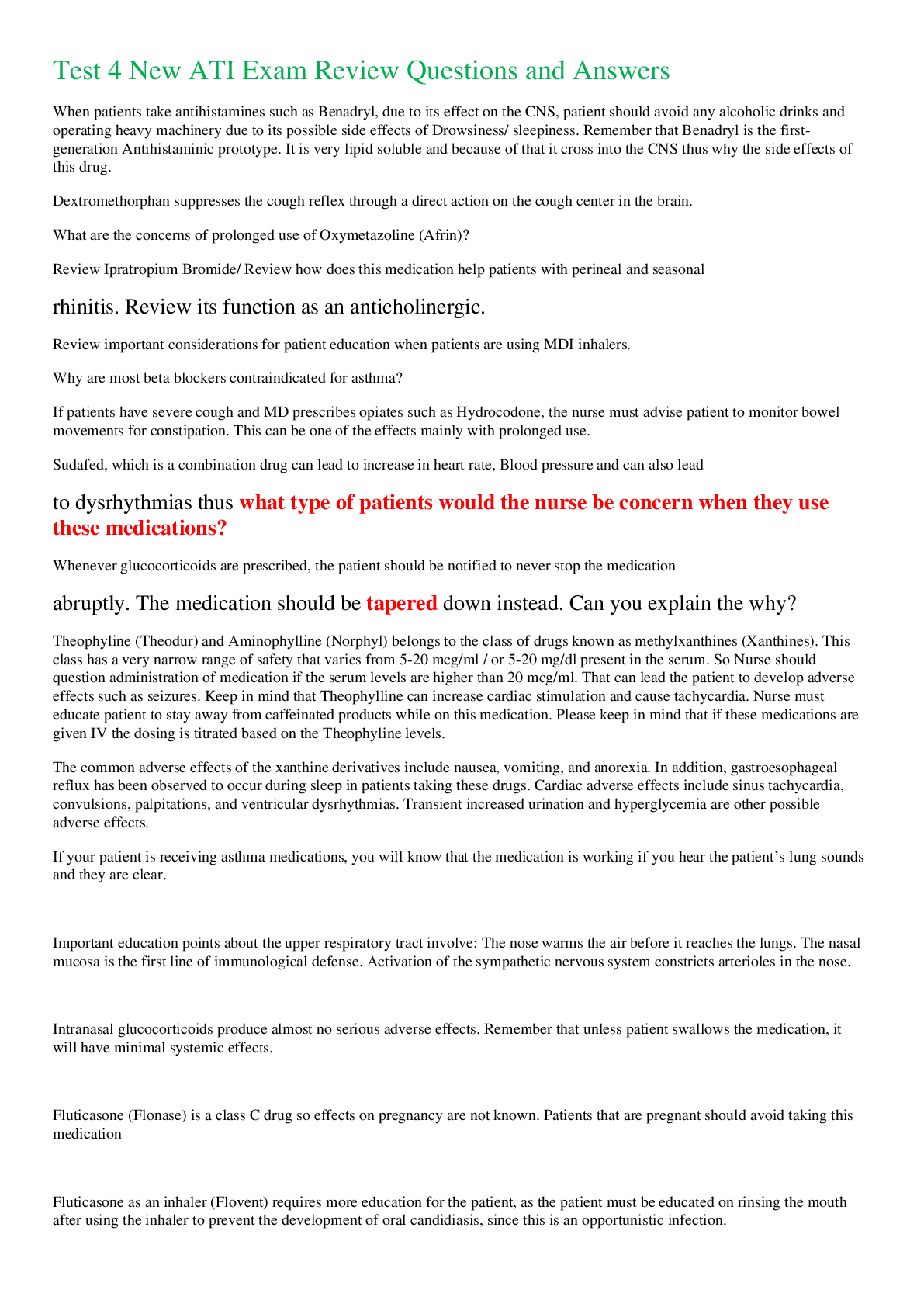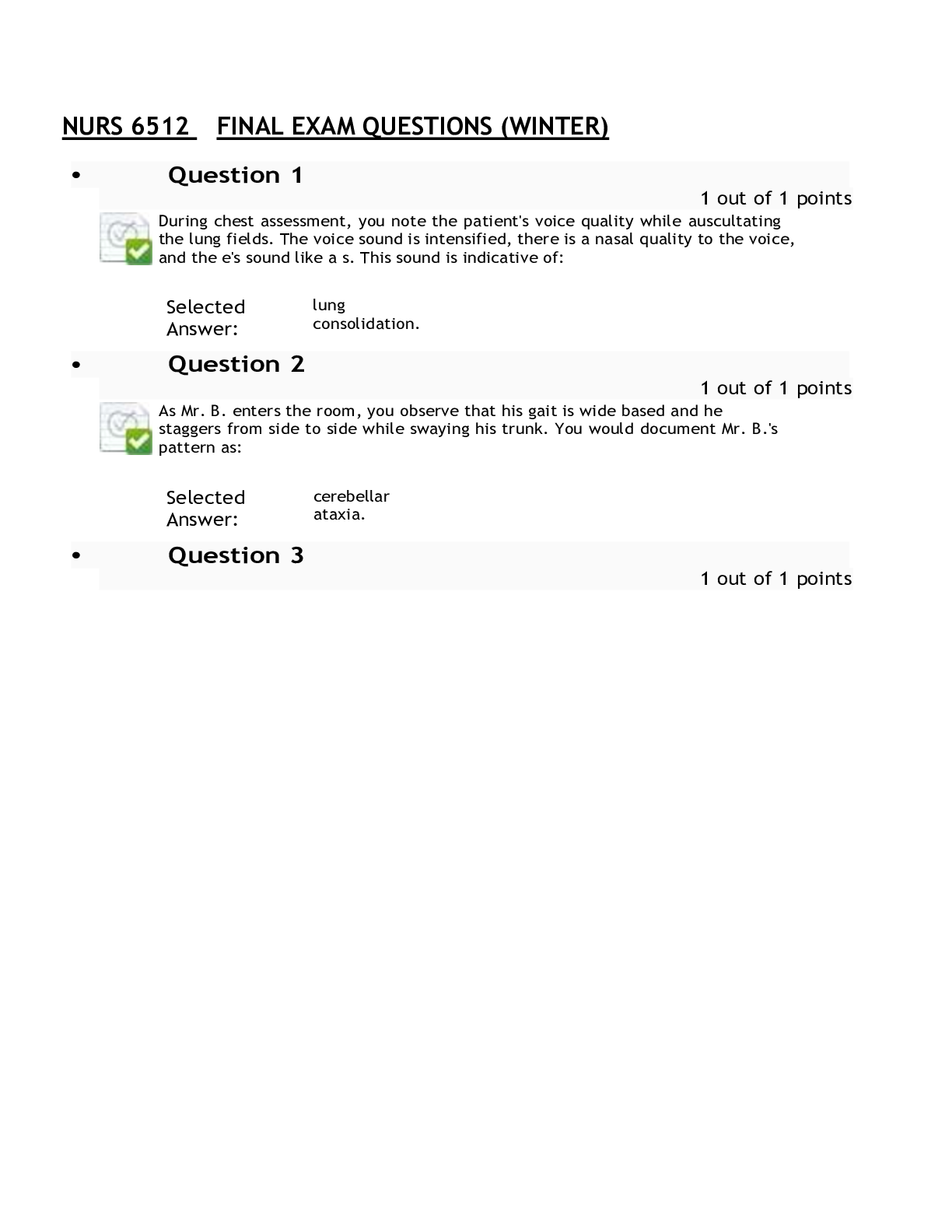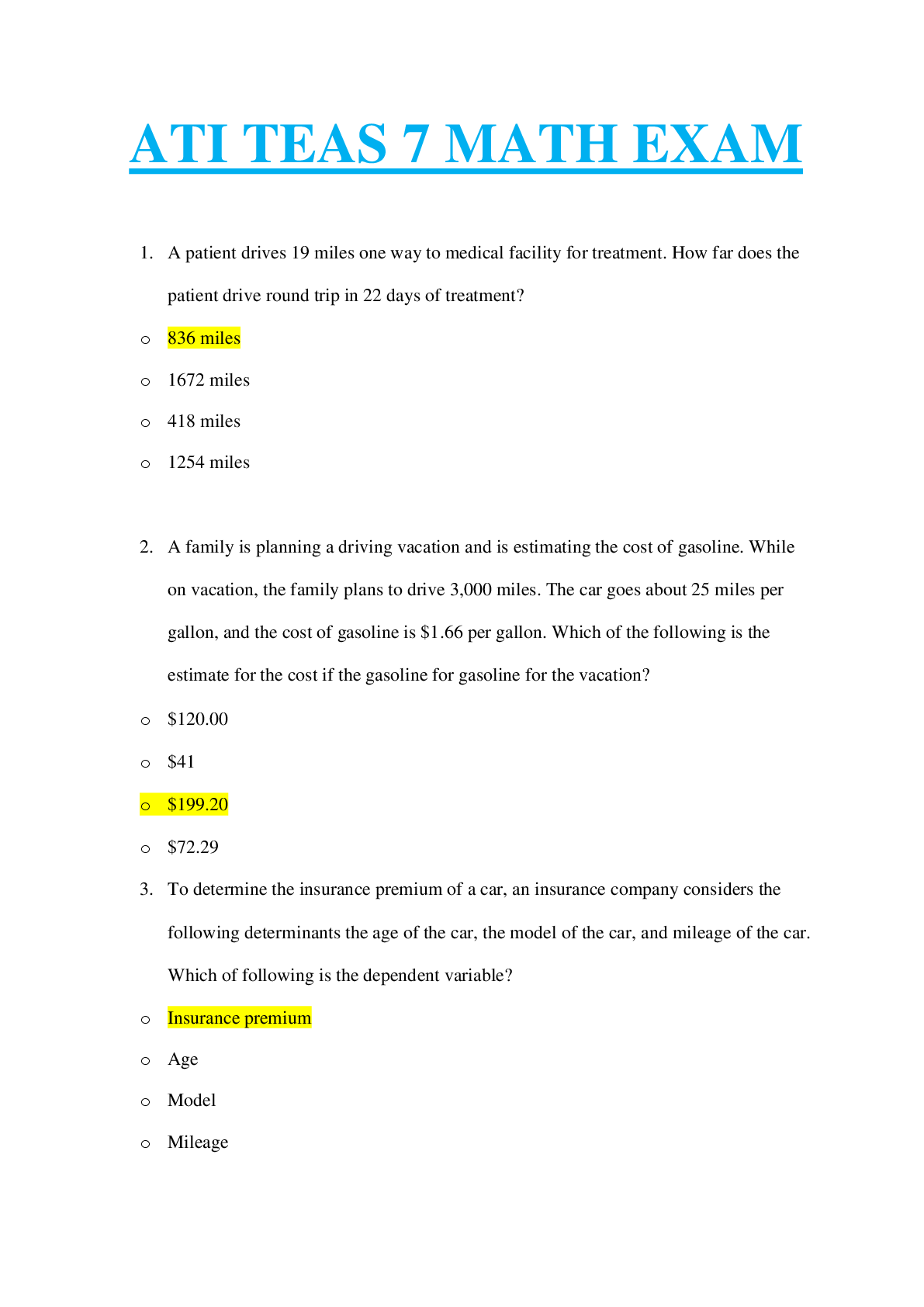Test 4 New ATI Exam Review Questions and Answers,100% CORRECT
Document Content and Description Below
Test 4 New ATI Exam Review Questions and Answers • When patients take antihistamines such as Benadryl, due to its effect on the CNS, patient should avoid any alcoholic drinks and operating heavy ma... chinery due to its possible side effects of Drowsiness/ sleepiness. Remember that Benadryl is the first-generation Antihistaminic prototype. It is very lipid soluble and because of that it cross into the CNS thus why the side effects of this drug. • Dextromethorphan suppresses the cough reflex through a direct action on the cough center in the brain. • What are the concerns of prolonged use of Oxymetazoline (Afrin)? • Review Ipratropium Bromide/ Review how does this medication help patients with perineal and seasonal rhinitis. Review its function as an anticholinergic. • Review important considerations for patient education when patients are using MDI inhalers. • Why are most beta blockers contraindicated for asthma? • If patients have severe cough and MD prescribes opiates such as Hydrocodone, the nurse must advise patient to monitor bowel movements for constipation. This can be one of the effects mainly with prolonged use. • Sudafed, which is a combination drug can lead to increase in heart rate, Blood pressure and can also lead to dysrhythmias thus what type of patients would the nurse be concern when they use these medications? • Whenever glucocorticoids are prescribed, the patient should be notified to never stop the medication abruptly. The medication should be tapered down instead. Can you explain the why? • Theophyline (Theodur) and Aminophylline (Norphyl) belongs to the class of drugs known as methylxanthines (Xanthines). This class has a very narrow range of safety that varies from 5-20 mcg/ml / or 5-20 mg/dl present in the serum. So Nurse should question administration of medication if the serum levels are higher than 20 mcg/ml. That can lead the patient to develop adverse effects such as seizures. Keep in mind that Theophylline can increase cardiac stimulation and cause tachycardia. Nurse must educate patient to stay away from caffeinated products while on this medication. Please keep in mind that if these medications are given IV the dosing is titrated based on the Theophyline levels. • The common adverse effects of the xanthine derivatives include nausea, vomiting, and anorexia. In addition, gastroesophageal reflux has been observed to occur during sleep in patients taking these drugs. Cardiac adverse effects include sinus tachycardia, convulsions, palpitations, and ventricular dysrhythmias. Transient increased urination and hyperglycemia are other possible adverse effects. • If your patient is receiving asthma medications, you will know that the medication is working if you hear the patient’s lung sounds and they are clear. • Important education points about the upper respiratory tract involve: The nose warms the air before it reaches the lungs. The nasal mucosa is the first line of immunological defense. Activation of the sympathetic nervous system constricts arterioles in the nose. • Intranasal glucocorticoids produce almost no serious adverse effects. Remember that unless patient swallows the medication, it will have minimal systemic effects. • Fluticasone (Flonase) is a class C drug so effects on pregnancy are not known. Patients that are pregnant should avoid taking this medication • Fluticasone as an inhaler (Flovent) requires more education for the patient, as the patient must be educated on rinsing the mouth after using the inhaler to prevent the development of oral candidiasis, since this is an opportunistic infection. • • The respiratory system offers a rapid and efficient mechanism for delivering drugs. The enormous surface area of the bronchioles and alveoli, and the rich blood supply to these areas, results in an almost instantaneous onset of action for inhaled substances. Thus, delivering respiratory medications via inhaler is the best route of administration. • When nurses are educating patients about the use of bronchodilators like Albuterol (Rescue Inhaler), a good explanation as far as the mechanism of action is as follows: The inhalers will widen the airway due to activation of the flight or fight response, or the B2 adrenergic receptors of the sympathetic nervous system. This activation causes smooth muscle to relax and bronchodilation to occur. • What are some of the differences between using inhalers that are for prevention and prophylactic use such as Advair compared to inhalers that are used for the acute relief for bronchoconstriction such as albuterol? • Guaifenesin (Mucinex) is an expectorant. It helps stimulate flow of secretion. • Keep in mind that the parasympathetic nervous system will cause bronchoconstriction while sympathetic nervous system will lead to bronchodilation. • DPIs or dry powder inhalers are activated during inhalation • Albuterol is a beta 2 adrenergic agonist. It is a short acting bronchodilator/ Rescue inhaler for Asthma. Onset in less than 5 minutes. • Leukotriene modifiers are used primarily for prophylaxis in the treatment of asthma. This medication works by reducing inflammation thus they need to be taken daily even if the symptoms improve. Review the function of Leukotrienes • Asthma is one of the conditions known as chronic Obstructive Pulmonary Disorder. This condition has both an obstructive component and an inflammatory component. • What is the concern associated with the use of glucocorticoids if patient is not rinsing mouth after using the inhaler? • The nurse must educate the patient in the appropriate utilization of inhalers. Review education for different types of inhalers! • Glucocorticoid inhalations used in COPD patients are used as a prophylaxis and to prevent exacerbations. These medications are used daily. • Acetylcysteine (Mucomyst) helps break down and thin the mucus in the lungs. • The nurse should always explain to the patient that when patients get prescribed two inhalers, such as a bronchodilator and a glucocorticoid or a leukotriene modifier, the bronchodilator (albuterol) should be used prior to using the leukotriene modifier (such as cromolyn) or glucocorticoids (such as Beconase) Using the bronchodilator first allows the airways to be opened, ensuring that the maximum dose of medication will get to the client's lungs. o Vm (ml)/ Time (min) X Drop Factor (gtts/ml) = Gtts/min o Vm (ml)/ T (Hours) = ml/Hr D/H x Q Remember that a Microdrip is = 60 gtts/ml [Show More]
Last updated: 1 year ago
Preview 1 out of 3 pages

Reviews( 0 )
Document information
Connected school, study & course
About the document
Uploaded On
Mar 01, 2023
Number of pages
3
Written in
Additional information
This document has been written for:
Uploaded
Mar 01, 2023
Downloads
0
Views
51

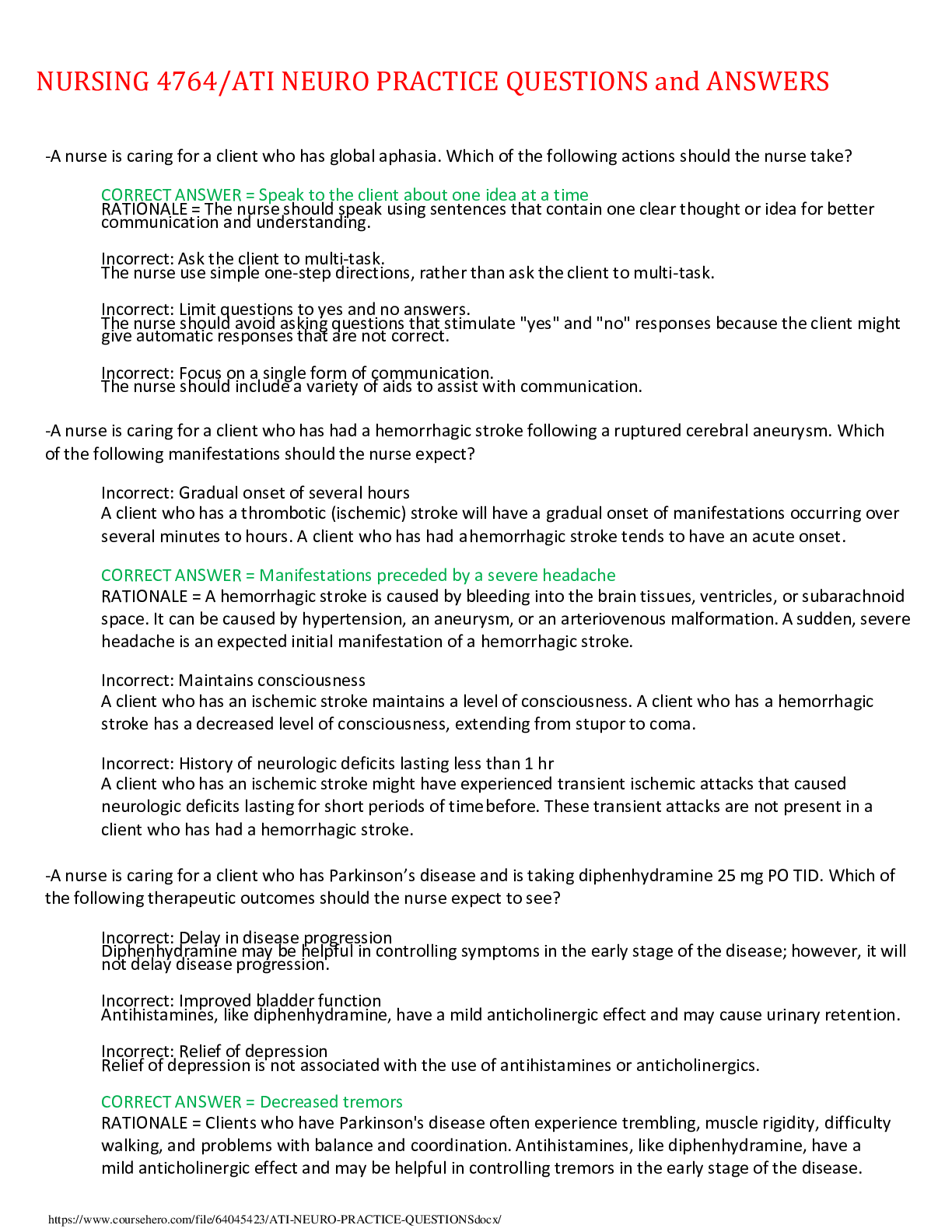
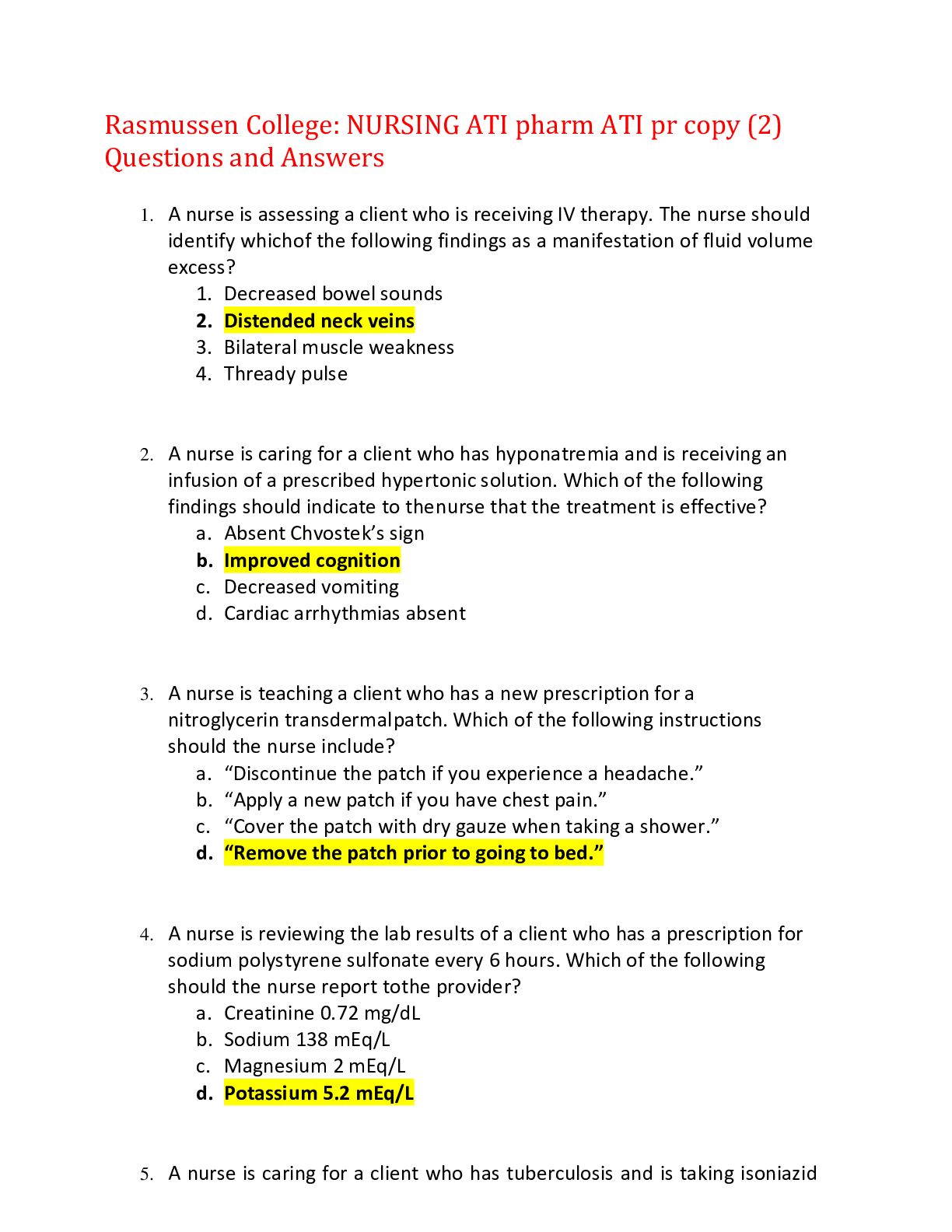
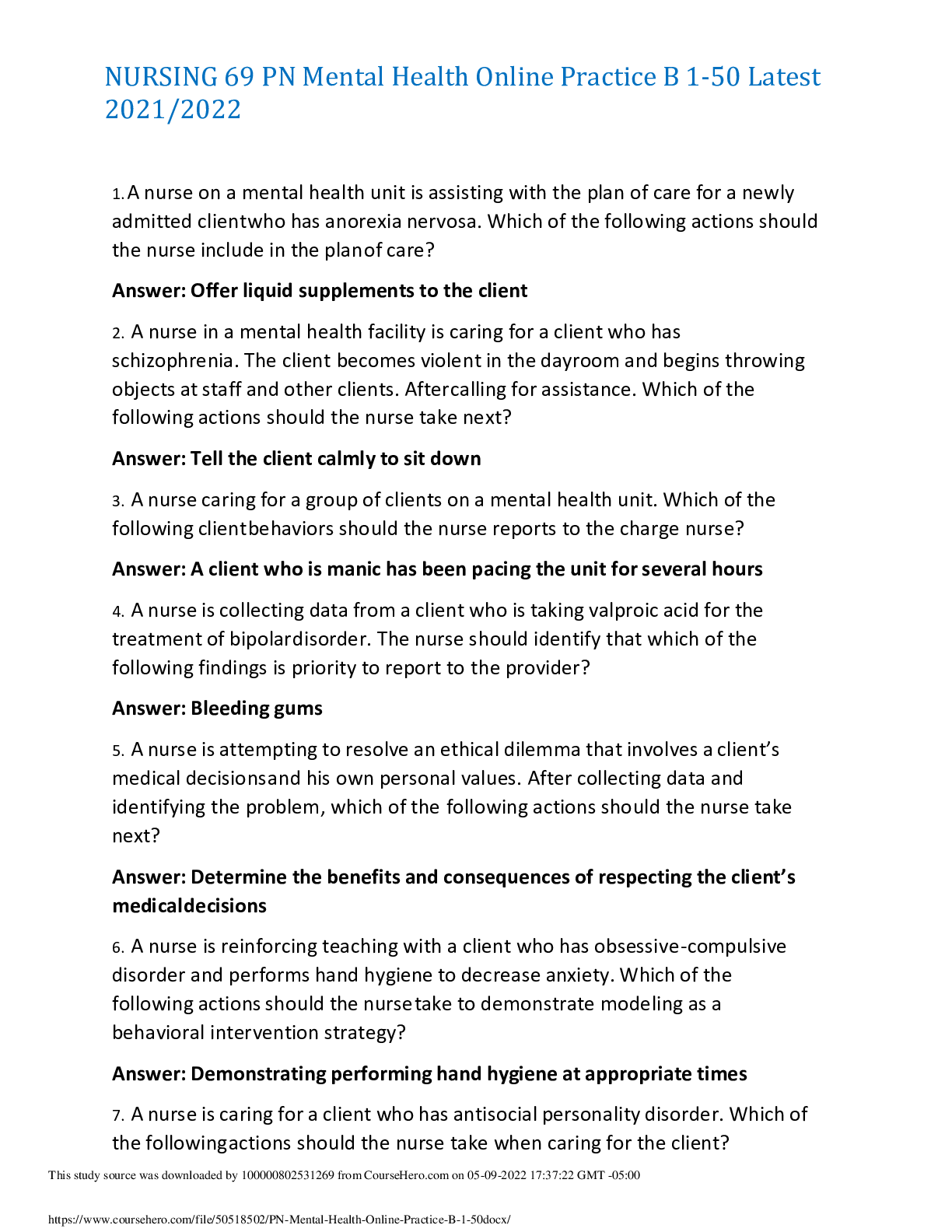

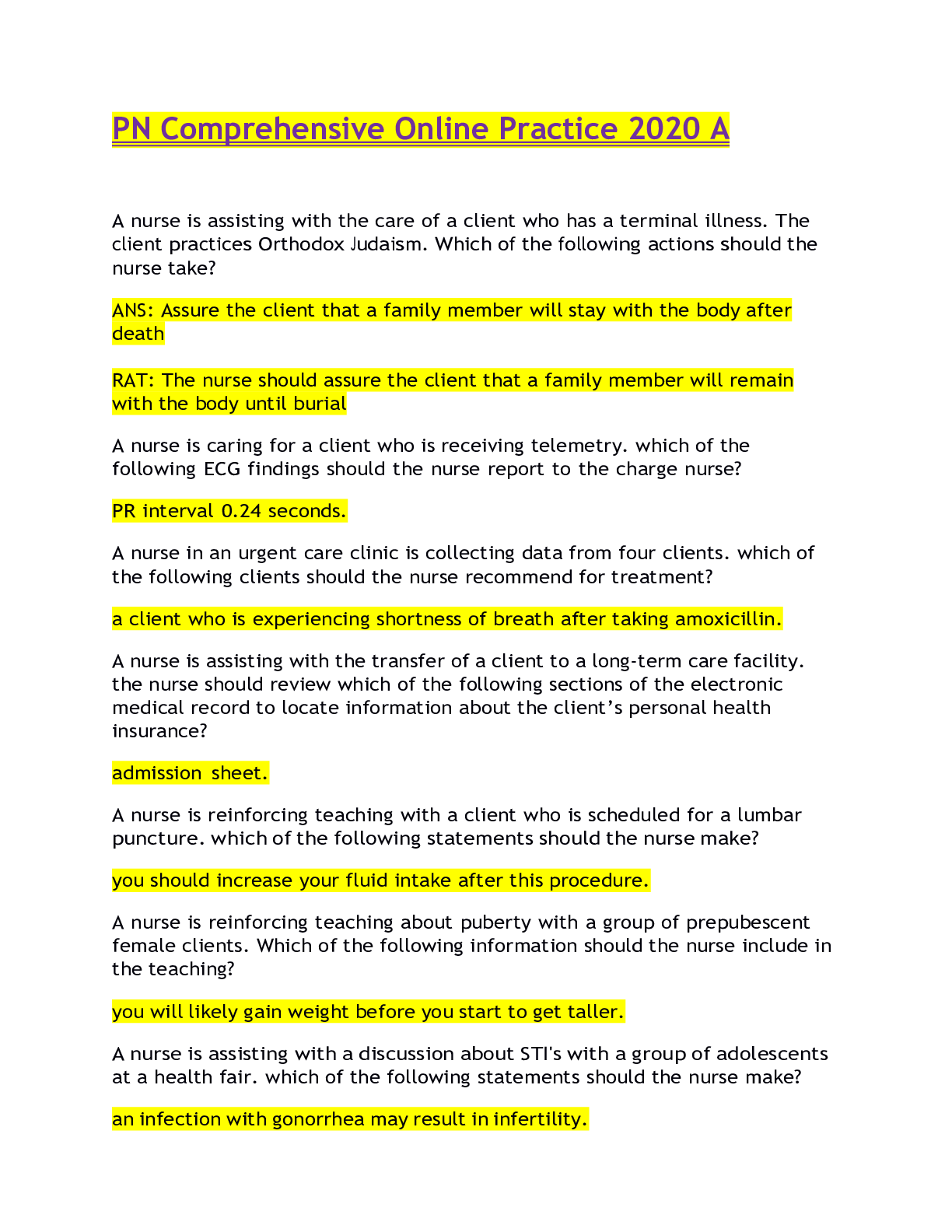
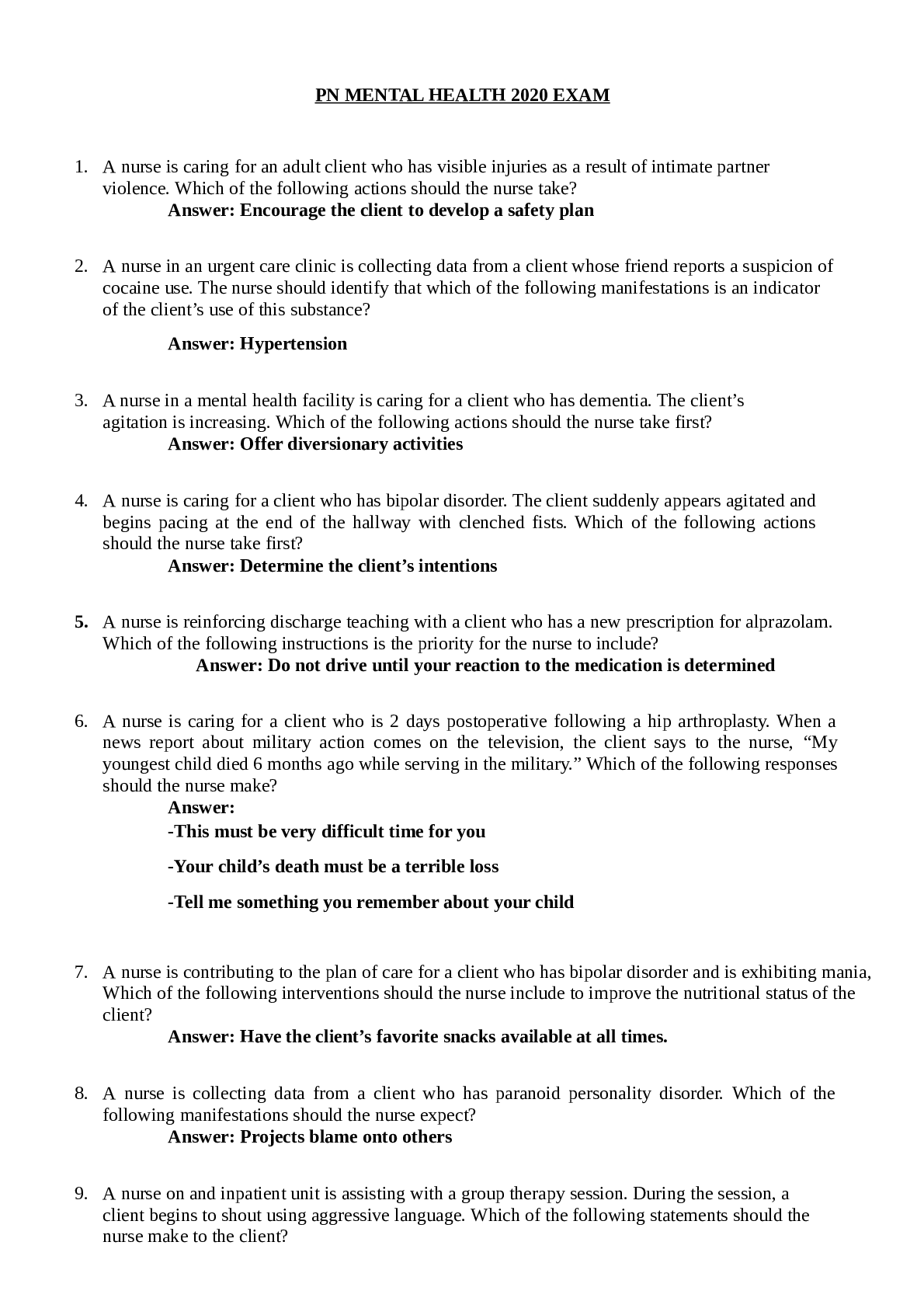


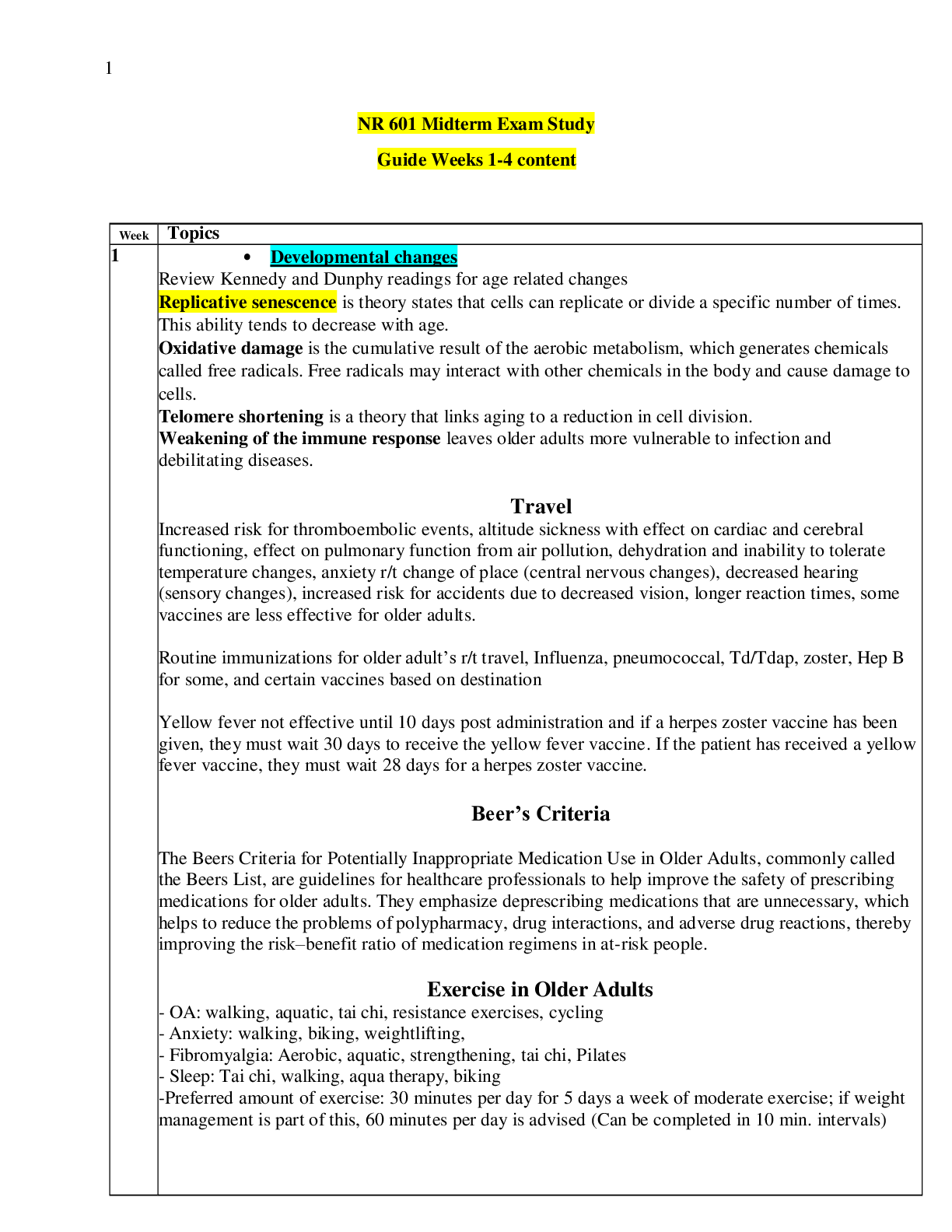
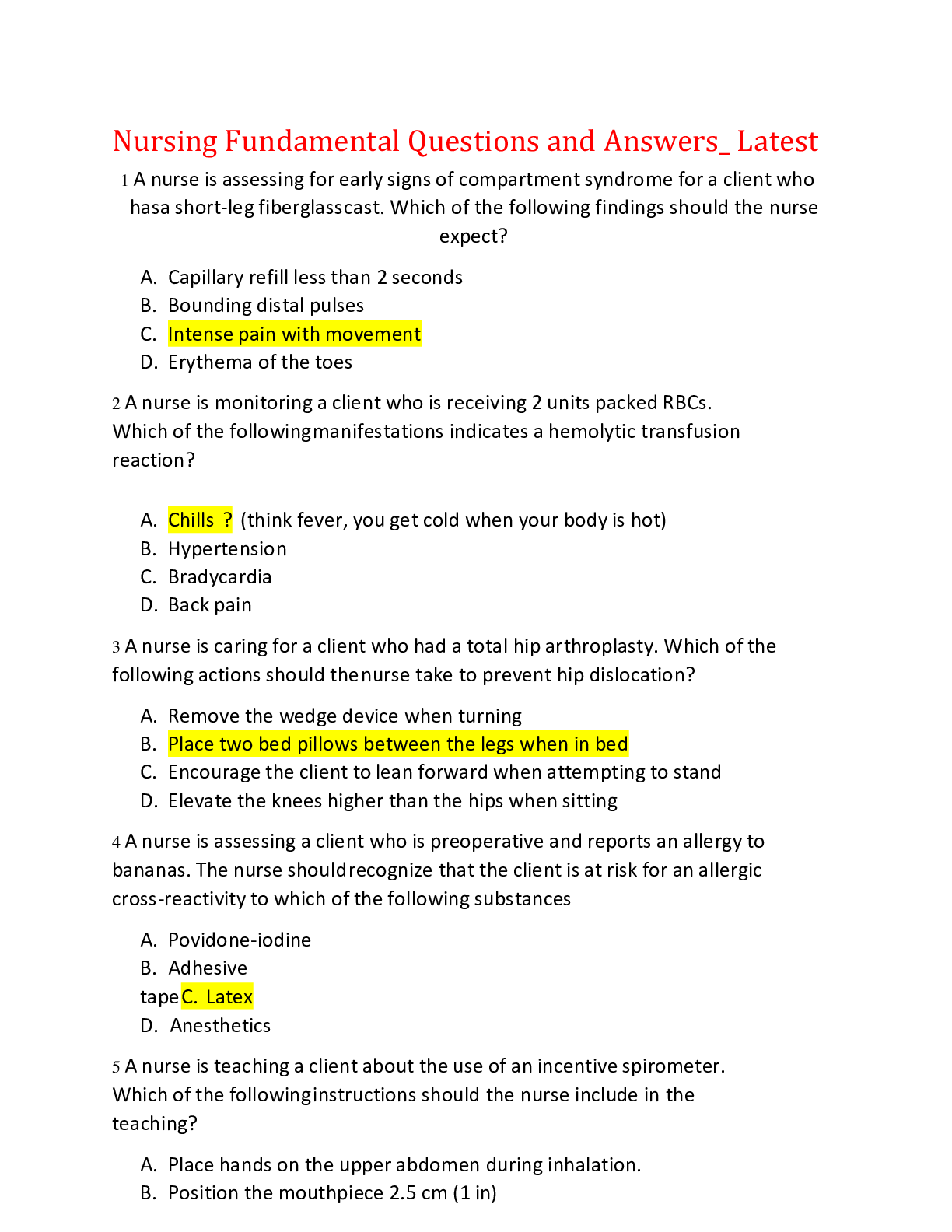
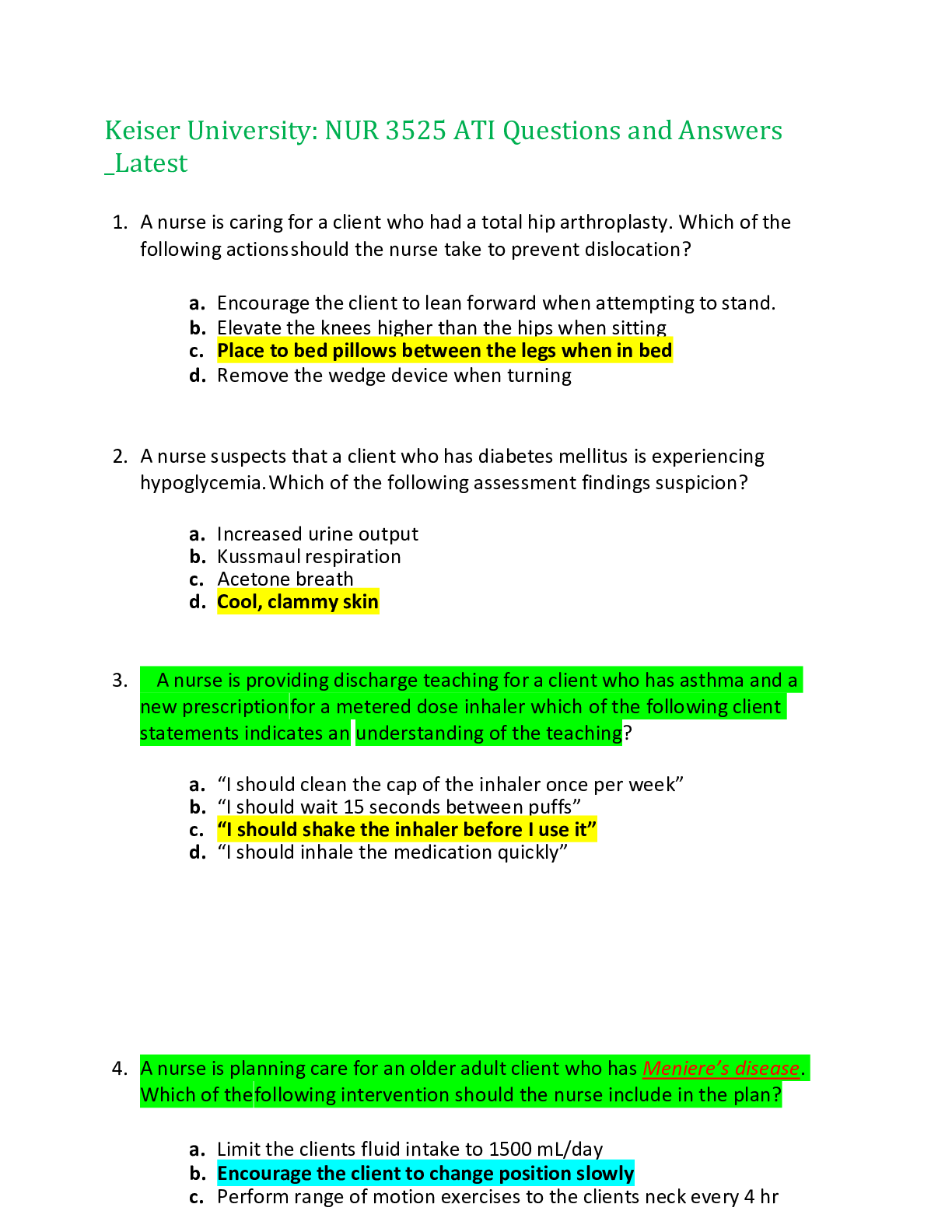


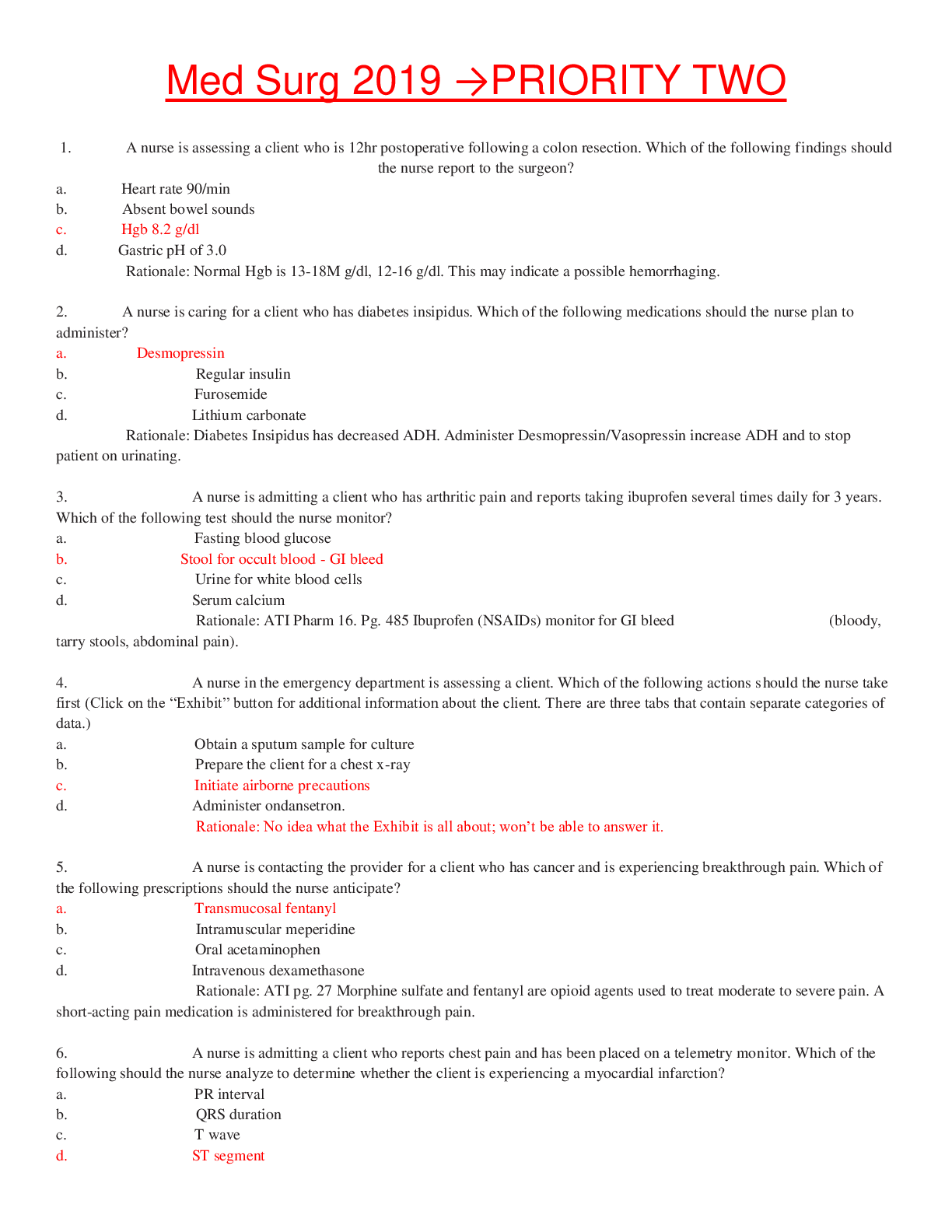
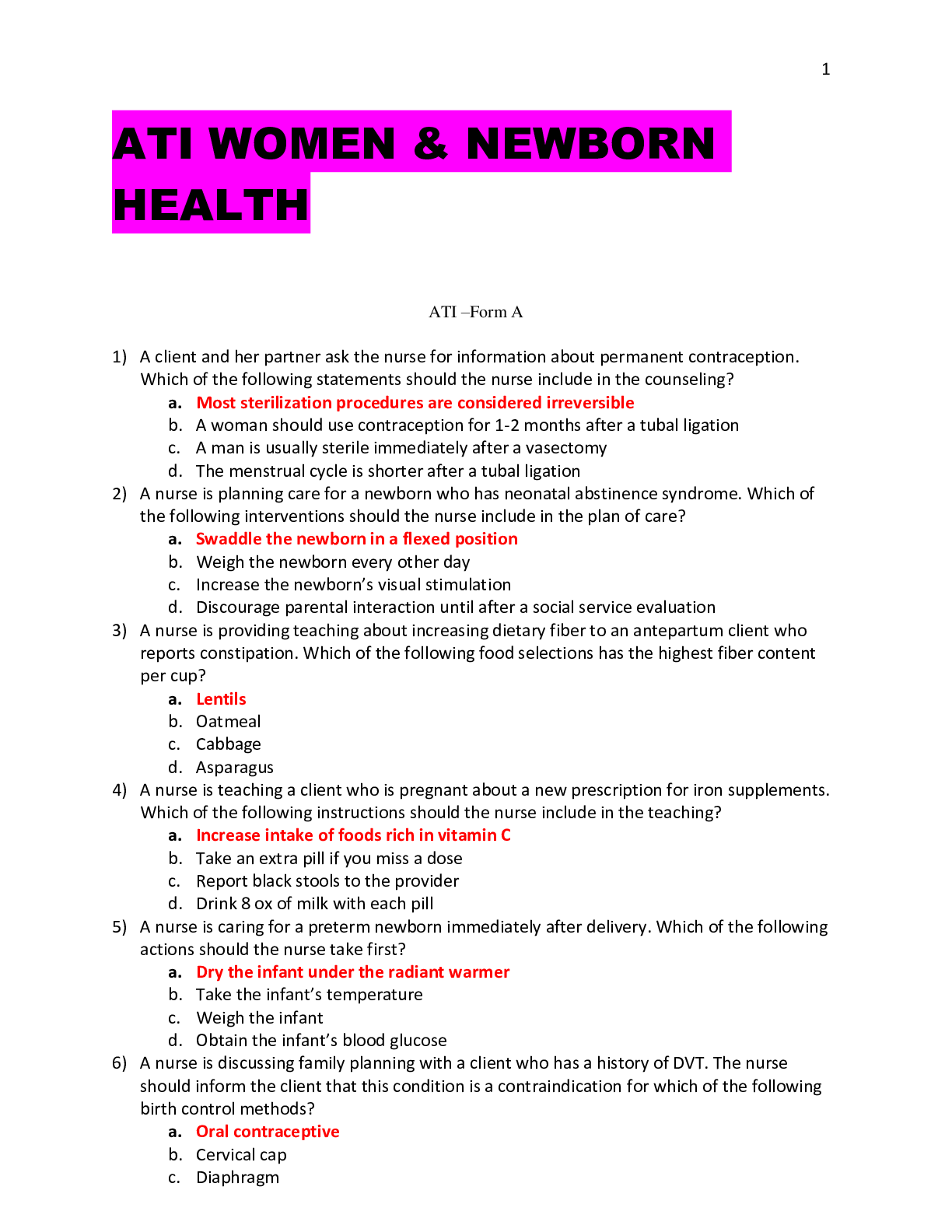

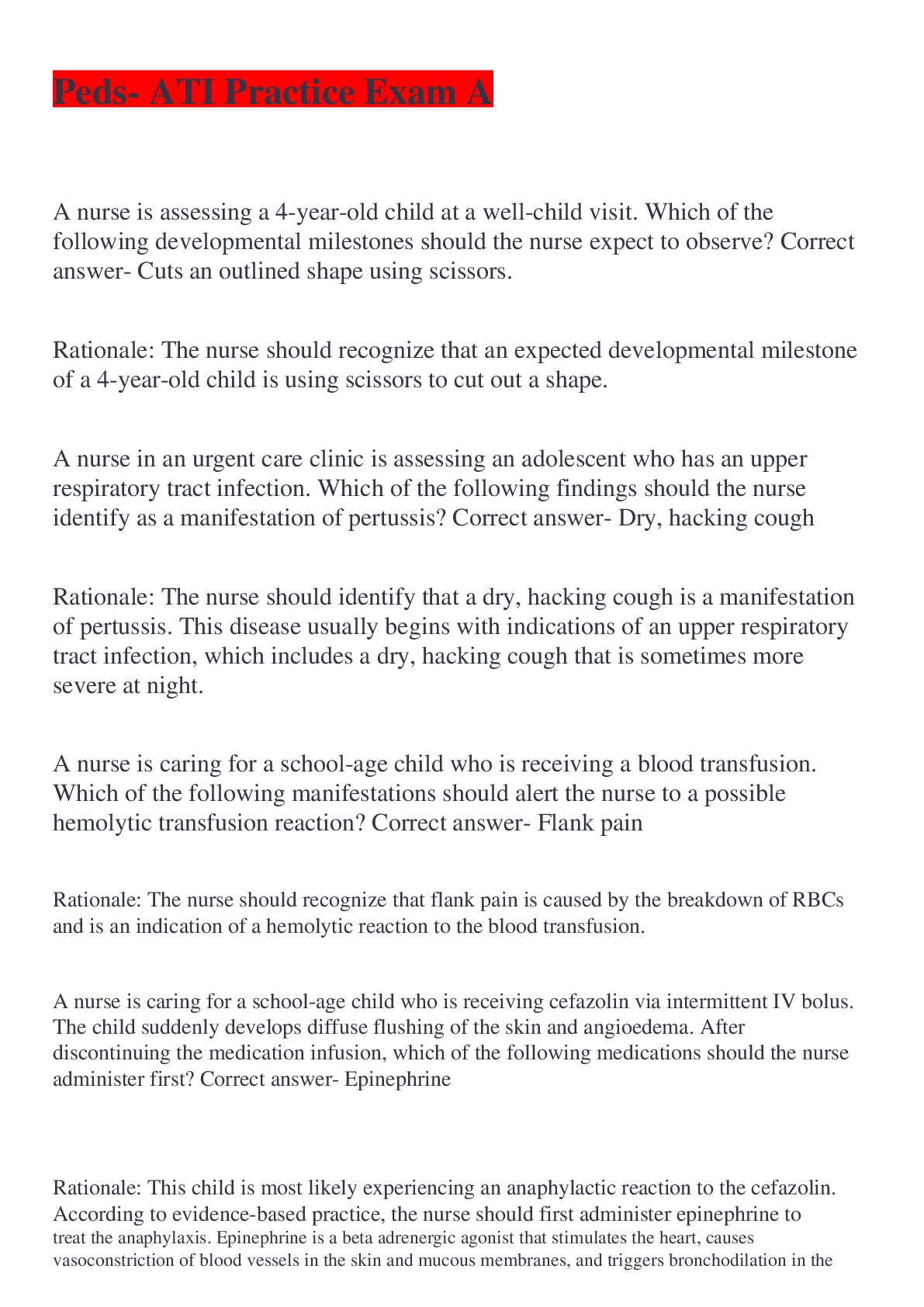
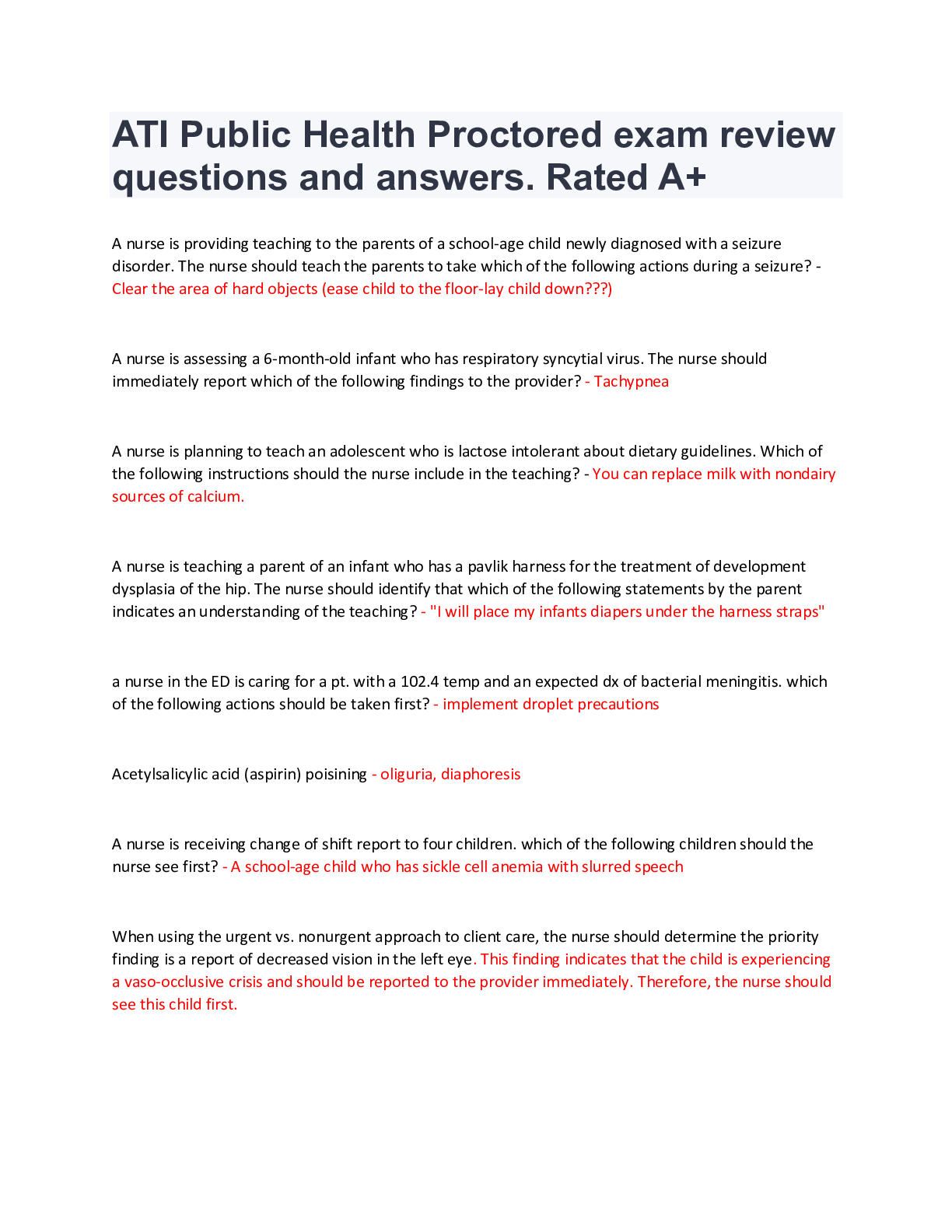

.png)
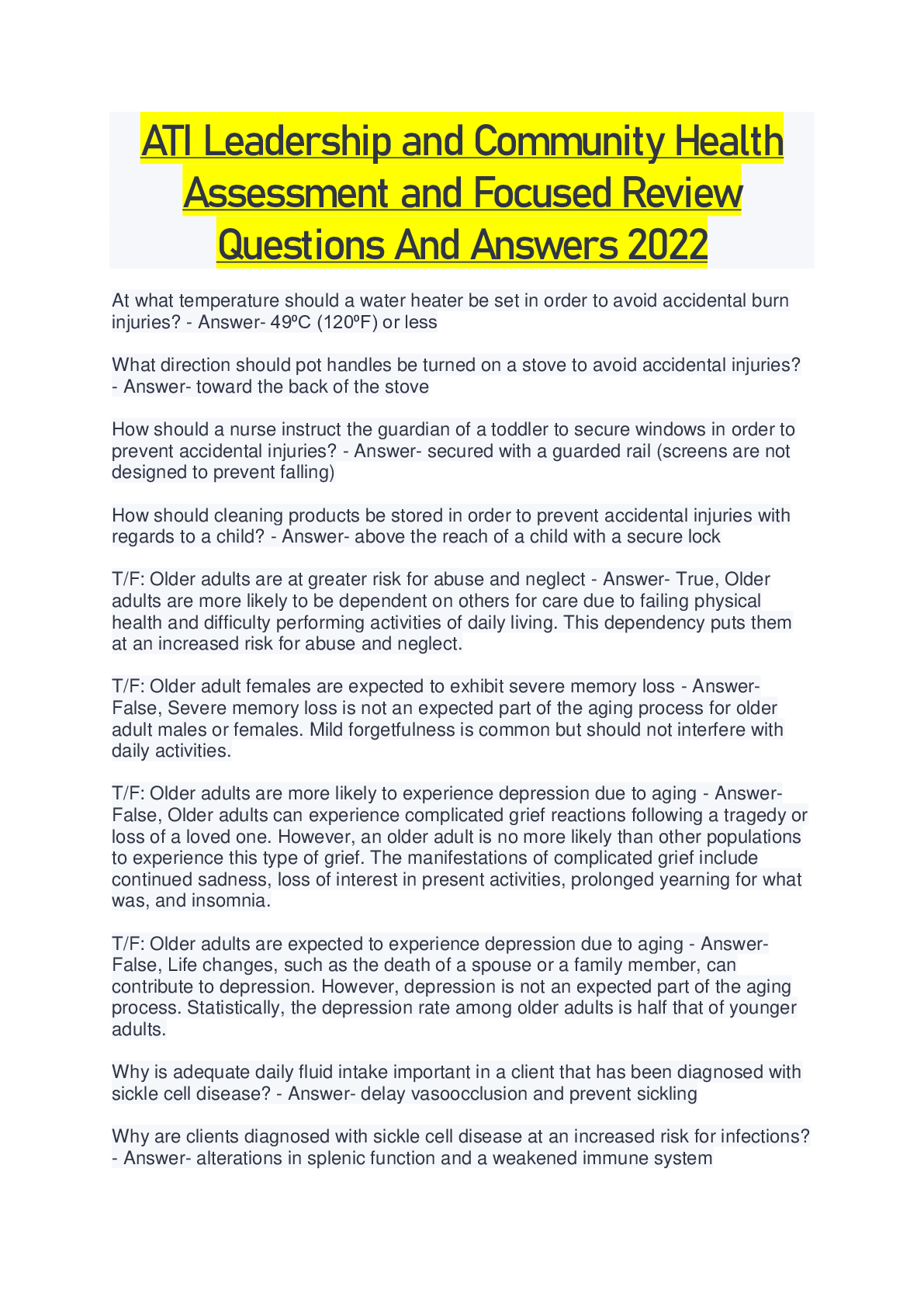
.png)
